Crystal singing bowl
Complete guide to crystal bowls
In the vast world of singing bowls we usually see two schools: Tibetan bowls and crystal bowls. But I’m not actually here to compare these two types of bowls or even declare which one is better to have at home. Throughout this article I’m going to try to answer questions that you have been asking about crystal bowls. Are they really effective? What are their effects on the human body? How do I use them? After reading this article, these bowls will no longer hold any secrets.
The origin of crystal bowls
Crystal singing bowls, unlike their Tibetan counterparts, are a very recent invention. While the production of Tibetan bowls dates back several thousand years, it took until the 1980s to discover the incredible effectiveness of crystal bowls on the human body. Unlike Tibetan bowls’ origins, those of crystal bowls are much less dreamy or spiritual. Crystal bowls were originally used in the IT sector, for manufacturing certain components. Crystal bowls were then used as crucibles (a type of manufacturing mould) to make pure silica computer chips. These chips are still in use today and there is a strong possibility that you have one in your computer or smartphone. Used only for their heat resistant properties in factories, it turned out that these crucibles also possessed incredible acoustic properties.
Little anecdote: When tidying away some crucibles and throwing them away, an employee discovered that these bowls could have a totally different use. Charmed by its sound, the idea of crystal singing bowls was born.
Today the IT industry remains one of the main producers and users of crystal bowls. In actual fact their use as a musical instrument represents only a small portion of total crystal bowls sold worldwide. However, this trend is beginning to reverse since the use of crystal bowls for their benefits on the body is becoming increasingly popular and studies being carried out demonstrating their effectiveness are on the rise.
Manufacturing method

Crystal bowls are made from silica. Silice (SiO₂) is the most common element in the Earth’s crust so it is not as rare or precious. We can find it in nature in crystal form (quartz) but also as sand. Silica sand is formed naturally following quartz crystal erosion by wind or rain. It’s mainly in this state that it will be used to make crystal bowls.
Firstly, this sand is collected and impurities are filtered out to obtain more than 99.9% pure silica sand. Next, it is heated to over 4000°c and poured into moulds that also act as centrifuges. The shape, size, thickness and the bowl’s diameter are determined at this stage and gives the bowl its own vibratory frequency.
Other processes are also used to add colour or give the bowl a “frosted” look, which explains the wide possible choice when it comes to selecting your crystal singing bowl.
As you’ve seen, manufacturing a crystal bowl is totally different from that of a Tibetan singing bowl. Much more industrial, its manufacturing method gives better acoustic results. As a reminder, a Tibetan bowl’s sound only reveals itself after it has been made. Sometimes some bowls have defects or are too damaged which means they cannot be used in meditation. The crystal bowl’s manufacturing process completely limits this kind of risk and means it is also possible to create a custom bowl with the desired sound qualities.
Effects on the human body

“How do these sound waves affect our body? Is there a real advantage to favouring one type of bowl over another? How can a simple singing bowl help me feel better?”
You must have asked yourself these kinds of questions at least once in your life if you are interested in singing bowls and please note that you aren’t the only one.
In 1999 Doctor Mitchell Gaynor, a reputable oncologist from Manhattan, published a book called “The Healing Power of Sounds”. He explains in his book that he used singing bowls in some of his patients’ treatments. The results are compelling and he found that the rate of patient improvement and recovery are much higher than those of patients who received standard treatment.
It is still difficult today to obtain accurate analysis and data on the effects of singing bowls on our health. However, the number of testimonies from people who say they feel better in themselves after using a singing bowl is significant. The relationship between the mind and the body has always been a divisive subject and it is sometimes difficult to prove that a well-rounded spirit can lead to an improvement in our physical state.
How can the sound produced by a singing bowl affect our bodies?
Silicon is naturally present in our bodies (there is approximately 7g in the “average” human body). That is why the use of a crystal bowl (composed of more than 99.9% silica) has such an immediate effect on our bodies. It is a sensation that is felt as soon as the first notes of a singing bowl start to resonate. It is not just our ears that perceive the frequency but our entire bodies. This sensation is explained by the law of vibration.
“Everything in life is energy and vibration” A. Einstein
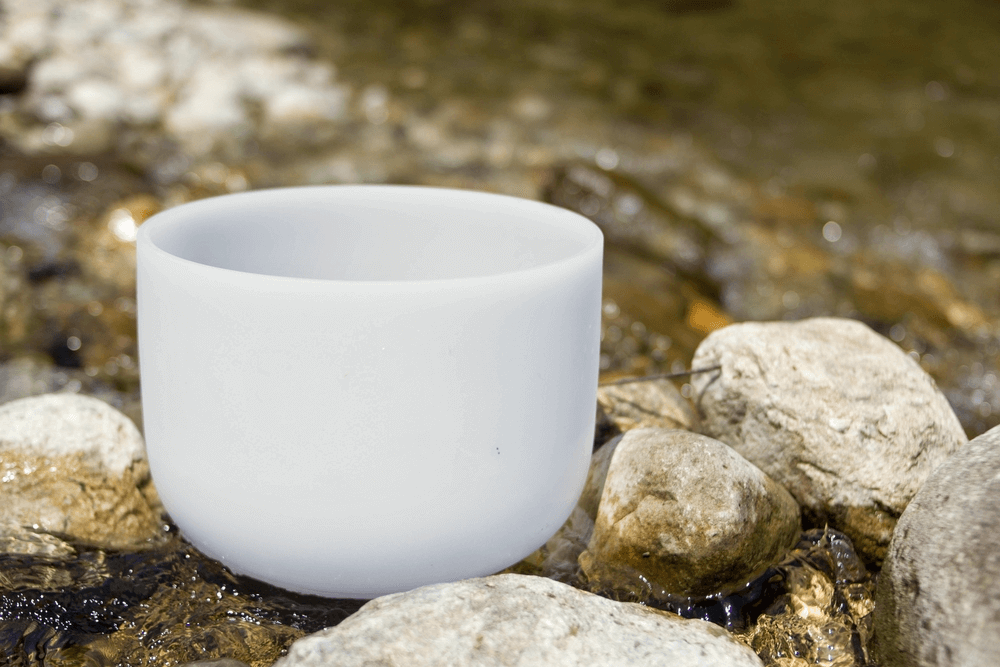
Our whole body is subject to vibrations. Right now, as I write this article, I am sending a vibration to my brain telling it to move my fingers in the way I want them to. The vibrations produced by singing bowls have the same effect on our body except in this particular case, our body is modelled on vibrations already present in nature. This allows us to be more in sync with everything around us. Making a crystal singing bowl, mostly composed of silica, vibrate will directly influence the cells in our entire body.
A lot less “complex” than that of classic Tibetan bowls, a crystal bowl’s vibration is purer. The wave produced will enter our body and allow us to “rebalance” all of our cells.
And where is the mind in all this?
As you probably know, the body and mind are not so easily distinguishable. Our thoughts, and so our brain, function solely on the principle of waves, frequencies and vibrations. Whilst vibrations are absorbed by our mind they allow us to take stock about our condition.
The idea of letting our bodies go entirely lets our mind be more free and awake. It also allows us to take in our environment with more clarity, to feel it and to be able to communicate with it better.
Beginning a meditation session with the benefits of vibrations emitted by a crystal bowl allows our body and minds to harmonise. It is an invitation from the universe to find calm throughout our being.
Notes produced by a crystal bowl and the influence on our chakras
You will know that all the parameters that come into play in the composition of a crystal bowl will influence its resonance frequency and therefore the note emitted by it. Amongst all of these parameters are obviously the size, diameter, the thickness of the sides, or even the elements incorporated in the silica mould.
Unlike classic Tibetan bowls, the sound produced by a crystal bowl is a lot more “precise” thanks to its purer and more homogenous composition. The sound that runs through the crystal bowl can move evenly without encountering a material change. This makes it much easier to assign a precise note to each type of bowl.
In the crystal singing bowls category we have 7 possible notes and they all have a different influence on our body.
Relationship between sound frequency and chakras
We know that each note corresponds to a precise frequency. It is standard in the world of crystal bowl users to associate each frequency with the 7 chakras of the human body. This can improve concentration when using a bowl by knowing where to place yourself.

If you assign a “C” note to the root chakra and scale it up, it will be easier for you to notice yourself. You will automatically assign each note to one of your chakras and you will be able to start to meditate faster and more effectively. We like to believe that the mind plays a crucial role in the use of singing bowls and if you need to assign a note to each of your chakras to be able to concentrate then we think this is a good solution.
However we also believe that it isn’t necessary to assign one note to a single chakra. First of all, because we have no historical or scientific proof to prove this relationship, but also because, again, it all comes down to personal feelings. The use of a singing bowl is a matter that only concerns you and your spirituality. You can also very well have feelings with a singing bowl where other people do not. Each person is different and the emotions that define us are infinitely complex. Do not limit yourself to one note for one of your chakras. What is important (a lot more important than your bowl’s note) is the way in which your body will absorb this frequency and use it as a spiritual guide during your journey of reflection and self-sacrifice. Let yourself be carried by your emotions, this is definitely the best advice to give whilst using a singing bowl.
The different types of crystal bowl
Today the range of singing bowls are increasingly numerous and we can quickly get lost in this ocean of choice. Colourful, frosted, clear, with or without a handle, it’s difficult to know where to start. But are they really that different? What are the advantages and disadvantages of each type of bowl? Is one more preferable over all others? To help you see a little clearer, here are the different categories of crystal singing bowls available on the market:
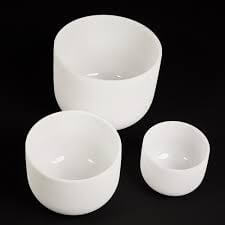
Frosted bowls : Frosted crystal bowls are the most common on the crystal bowl market. Frosted bowls are generally the largest and heaviest. Their dimensions mean they produce very intense vibrations and the sounds emitted are generally very powerful. It is also the easiest kind of crystal bowl to make sing.

Clear crystal bowls: Smaller and thinner than frosted bowls, transparent crystal bowls aren’t less interesting but are actually the opposite! They are primarily used by professionals because it is difficult to make them sing correctly. The sound produced by a clear crystal bowl is extremely pure and the notes are generally lower than those produced by frosted crystal bowls.
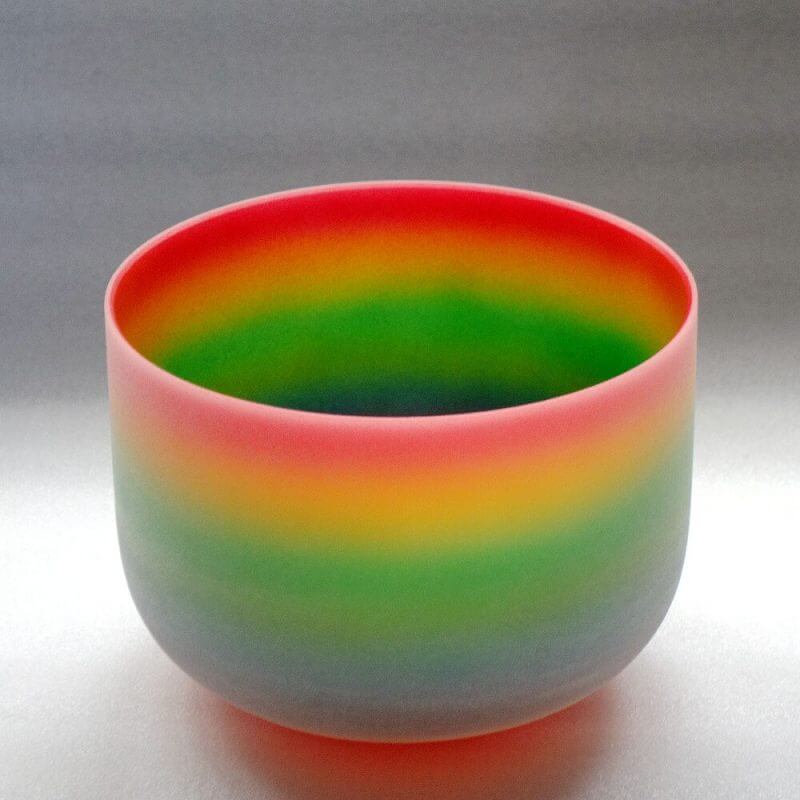
Colourful bowls : The latest arrival on the market, colourful crystal bowls are being talked about more and more. The price (generally higher) is justified by the incorporation of metal or more or less precious stones in their composition. Their sound is comparable to clear crystal bowls but the elements incorporated in the bowl’s structure add a minor variation to the note produced.
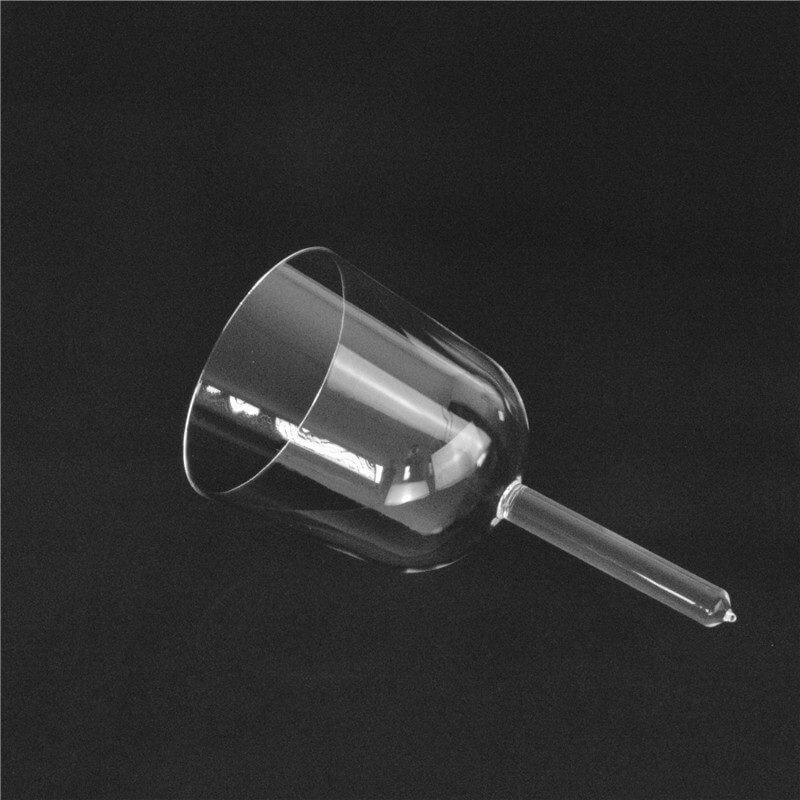
Chalice bowls : A handle is available for all kinds of bowls; frosted, clear, and colourful. A bowl with a handle guides and perfectly controls the sound emitted by the bowl. It is also a great asset when using singing bowls outdoors. Everything is calculated during the design of the bowl so that the handle does not interfere with the vibrations produced by the bowl. These bowls are very rarely used in meditation, in fact their capacity to guide sound thus makes it a perfect therapeutic tool.
Now that you’re an expert on the different types of crystal singing bowls, we can move onto the part that might interest you the most: How do I correctly use my singing bowl?
Using a crystal bowl
Here you are- you have finally taken the plunge and you are wondering how to take full advantage of your bowl. There isn’t a lot of difference between making a Tibetan bowl sing and making a crystal bowl sing, the principle remains the same: we create a vibration thanks to the “Stick-Slip” effect which will be amplified by going through the sides of the bowl creating a sound wave.
For crystal bowls we generally prefer to use a slightly larger mallet than those used for classic Tibetan bowls. Similar to those used with gongs, they allow for a more harmonious and looser movement.
Step 1 : Place your bowl on your O-ring (or hold the handle if your bowl has one) and position yourself comfortably. Keep your back perfectly straight and relax your shoulders to perfectly align your chakras.
Step 2 : You can now start your session by delicately hitting your bowl. Don’t deliberately hit it but rather let the mallet drop with its own weight, like a pendulum. Similar to the sound produced by a bell, this method is generally considered as an invitation to meditate. Let the sound resonate in the space and wait for the vibration to slowly fade out.
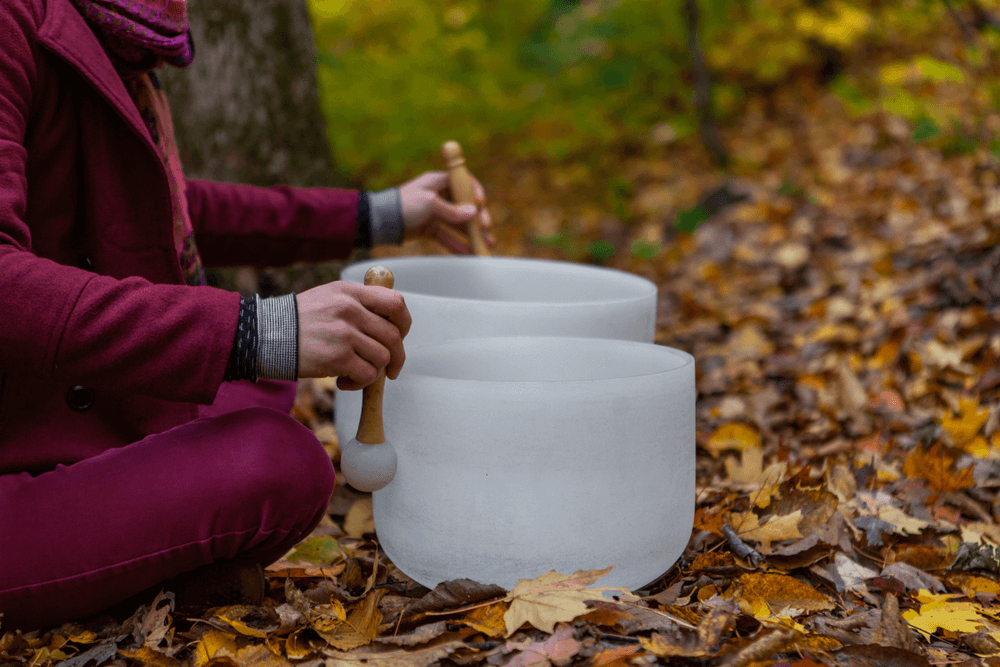
Step 3 : This is most certainly the most complicated step and it is at this point that the term “making a bowl sing” takes on its full meaning. Take your mallet in the same way you would a large pen and place it at around ⅔ of the maximum height of your bowl, against the side. Tilt gently and start softly moving around the bowl. Keep it tilted throughout the movement. Also keep in mind that it’s not just the wrist that moves but your entire arm, from the shoulder to hand. You should start to hear a discrete frequency coming from your bowl and from then on, it’s just a case of feelings and emotions. You can speed-up your movement, change your mallet’s tilt, vary the pressure applied to the bowl to produce the sound that suits you the best.
Let yourself be carried away by your bowl’s enchanting sounds and take advantage of this time out so you can refocus on what is important. The bowl is just an accessory, and the most important thing is how you use it to achieve your goal.
Caution : Avoid varying the direction of the rotations too often whilst using your crystal bowl. The waves that pass through the bowl are powerful and if they collide with each other your bowl can break. Wait until your bowl has completely “unloaded” before changing the direction of rotation.
Conclusion
True therapeutic tools, crystal bowls are used as much in sonotherapy as lithotherapy. Their benefits are recognised by health professionals and their use is increasing in popularity. In fact, you don’t have to be a distinguished musician to be able to make your crystal bowl sing and to simply enjoy its acoustic properties. However the singing bowl is still an accessory, a catalyst. This means that everything depends on you, on your ability to meditate, to take a step back from your surroundings and lift yourself spiritually. Like any activity, meditation and the use of singing bowls requires time and experience, don’t give up too quickly, it’s your perseverance that will make all the difference!
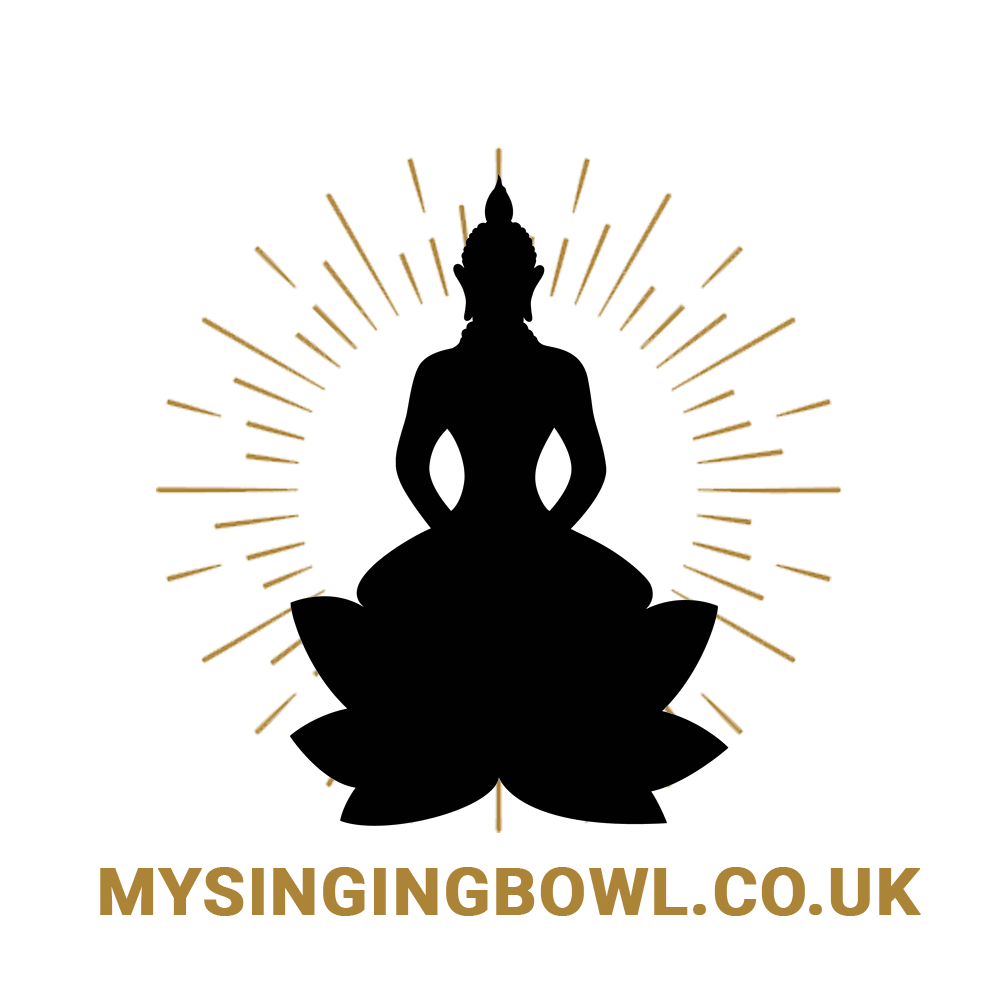
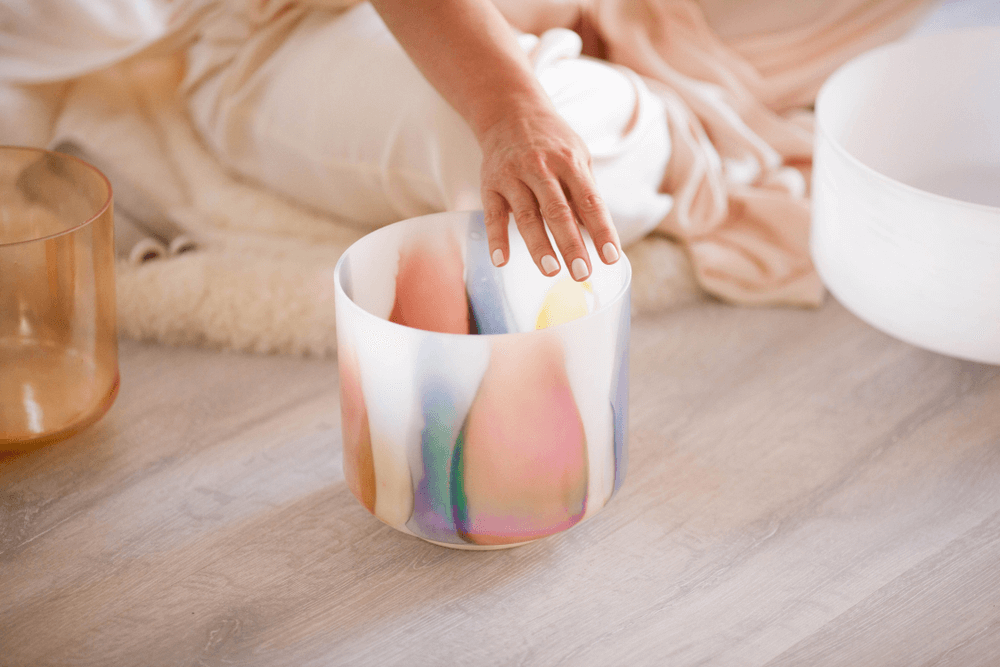
Great, this article very interesting and very clear thank you again for all this information. Kind regards